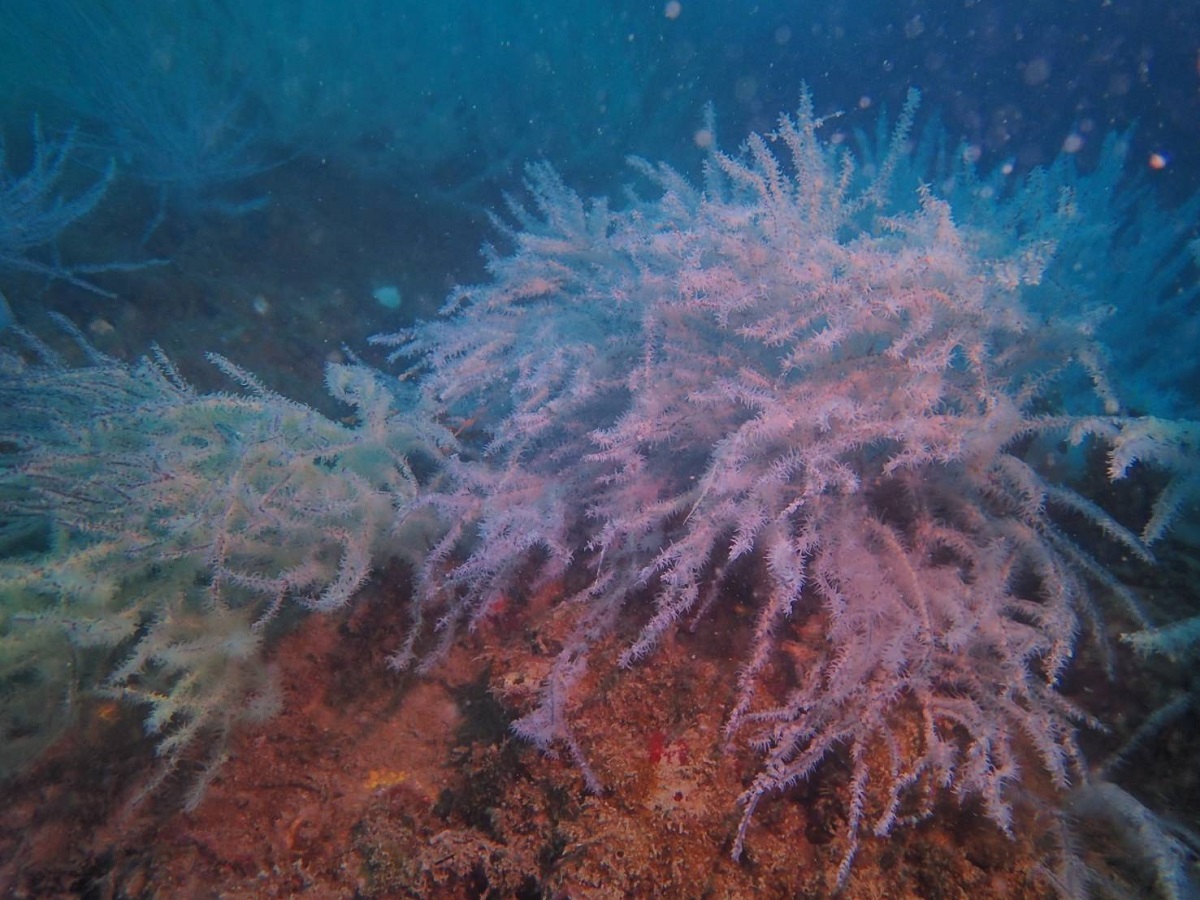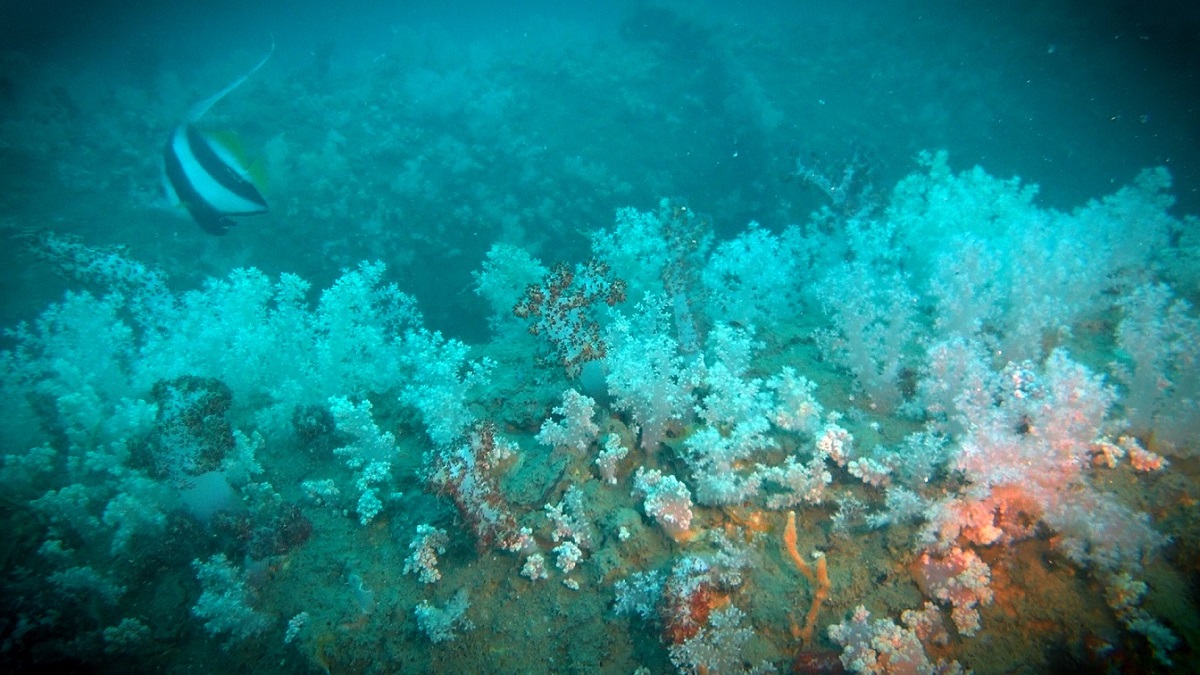press release Two years of success revealed: Thailand’s first-ever “Rigs-to-Reefs” pioneering project turning retired platform jackets into marine habitats

Turning retired platform jackets into artificial reefs is not a new idea. Conceived over 40 years ago, it has already been successful in many countries, from off the coast of Florida and the Gulf of Mexico, to Brunei and Malaysia. The use of retired platform jackets as artificial reefs for marine and coastal resources conservation at Koh Pha-Ngan, Surat Thani is Thailand’s first initiative. It involves applying and putting into practice expertise from abroad through the cooperation between the public, private, and education sectors.
Ten years ago, Chevron Thailand Exploration and Production, Ltd., a leading global energy company, initiated the idea of the project, and teamed up with the Petroleum Institute of Thailand along with other petroleum operators in the Gulf of Thailand to place mock-up platform jacket structures in a nearby location at Chaloklam Bay, Koh Pha-Ngan. The purpose was to advocate for a concrete joint-experiment project before the actual platform jacket placement. The placement of the mock-up platform jacket structures resulted in a significant increase in the population of fish and sessile organisms. This success led to the project receiving approvals from relevant government agencies, namely the Department of Marine and Coastal Resources (DMCR), the Marine Department, the Department of Fisheries, the Royal Thai Navy, and the Department of Mineral Fuels. The project then came to be known as the “Pioneering Project on the Use of Seven Retired Platform Jackets as Artificial Reefs for Marine and Coastal Resources Conservation at Koh Pha-Ngan, Surat Thani” (hereinafter referred to as the Pioneering Project). It is jointly run by three main organizations. DMCR supervises the project. Chevron provided DMCR with seven retired platform jackets to be used as artificial reefs and handed them over to DMCR in 2020. The company also provided support for their placement, as well as funding for the project. Chula Unisearch, on behalf of Chulalongkorn University (Chula Unisearch), is tasked with conducting an academic study in accordance with domestic and international academic standards. After over two years, the placement of the retired platform jackets has been successful in achieving its goals.
“The origin of the project lies in the question of how we could make the most use out of retired platform jackets as opposed to dealing with them onshore,” said Chatit Huayhongtong, president of Chevron Thailand Exploration and Production, Ltd., explaining how the Pioneering Project began. “The Gulf of Thailand is like our home. Over 60 years of Chevron’s business operations in Thailand, we have always been caring about the environment, and monitoring our impact on the marine environment. We have witnessed the abundance of fish populations and how they have grown over time near the platform jackets. The fish species are diverse, and whale sharks regularly visit the area. In addition to their roles in contributing to the country’s energy security, the platform jackets have served as artificial reefs, leading to our idea of continuing that utility to replenish marine resources, including the fish population. Retired platform jackets are transformed into new nurseries for fish. Although the idea is new in Thailand, but as a global energy company, we have drawn inspiration from our successful “Rigs-to-Reefs” project implemented overseas to shape the Pioneering Project.”
Two years after the placement of the artificial reefs, from October 2020 to October 2022, the anticipation is becoming a reality. Chaloklam Bay to the north of Koh Pha-Ngan provides a good start for the Pioneering Project due to the bay’s physical conditions as not only a fertile ground for marine organisms, but also a logistically convenient site for platform transport and community utility.
Assoc. Prof. Dr. Supichai Tangjaitrong, Managing Director of Chula Unisearch, spoke of the success of the Pioneering Project, “upon close monitoring, the outcomes of the project are found to be positive both in terms of nature as well as people. The quality of seawater and sediment around the seven reefed jackets are found to be at normal levels. We have also observed the presence of phytoplankton and zooplankton, which serve as food sources for various marine animals, thereby increasing fish diversity from 15 to 36 species. Although fish density in the artificial reefs is lower than that in natural reefs, the fish biomass is higher in terms of both size and weight. Most fish found are economically important, such as torpedo scads, fusiliers, and yellowstripe scads. In addition, many groups of fish are found to have returned after long disappearance from the area. Sessile organisms, predominantly black corals, are found to have recolonized the area as well. The artificial reefs are evidently becoming marine nurseries and habitats that are no less important than natural reefs, as well as fishery sites for local fishermen in the future.”
“We can see the difference between before and after the reefed jackets are there. As fishermen by trade, we recognize that the benefits are real. We no longer need to venture far out to fish. More economically important fish are available—and even fish we have not seen before,” added Khamnueng Singhanat, also known as Yung, a local fisherman in Chaloklam Bay.
Apichai Ekwanakul, Deputy Director-General of DMCR, said of the government regulations that “we are obliged to impose some measures to designate the area as protected for the first 1–2 years to allow for full recovery of the ecosystem as well as accurate surveys serving as a basis for future development. We plan to open up the area in due course for fishery with legal equipment, including fishing rods, and promote it as a featured diving spots for tourists. We consider the area to be as beautiful as natural diving sites. Once the surveys, collected data, and research studies sanctioned by Chula Unisearch point towards satisfactory results and that the benefits would outweigh any drawbacks, DMCR will pursue similar goals in other areas.”
